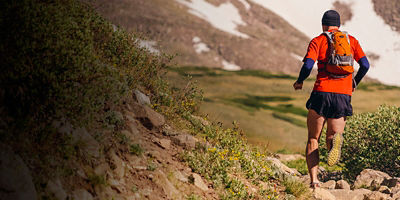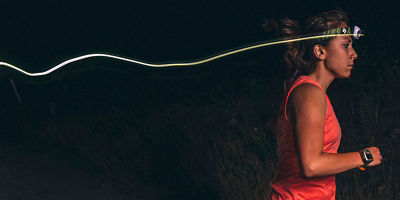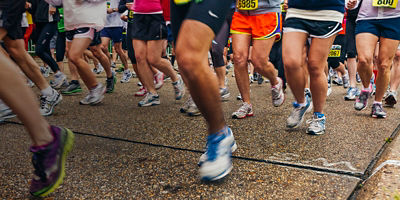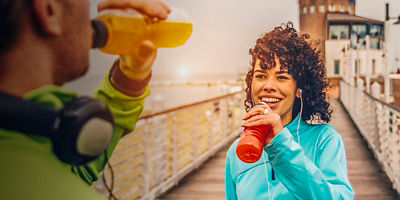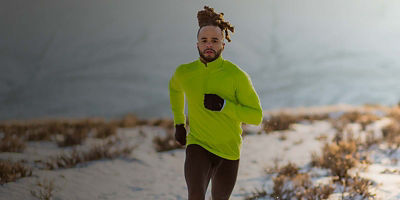
Whether you’re lapping the neighborhood flats or exploring new mountain trails, you’re using the same general muscle groups. Stretching will help your overall running performance—it keeps your joints healthy and limbs balanced—especially after a run, when your muscles are warmed up and most pliable for enhancing recovery.
Feeling tight after a run is natural, and not only in your legs. Your trapezius muscles (“traps”) and low back, for example, also get worked on a run, where stretching offers ample opportunities to loosen up. Just don’t do too much too soon. Don’t go diving for your toes with über-straight legs right away; ease into it, starting with small gentle movements so you don’t pull any muscles. And if you’re stretching prior to your run, consider dynamic movements that gradually increase range of motion, engage muscles, and increase blood flow. Running is always more enjoyable when you’re feeling loose and relaxed.
Pre-Workout Stretches
Downward-Facing Dog Pose
An oldie but a goodie, “down dog” gets blood flowing throughout your body and wakes up your legs. Plant your palms at the top of your mat. Place the ball mounds of your feet at the back of your mat. Lift your hips up to the sky so you’re in an inverted “V” shape. Press into your index fingers and thumbs. Draw your shoulders away from your ears, shake out your head. Keep a micro-bend in your knees at all times, and work toward pressing your hips upward.
- Make it dynamic: Bend one knee, then the other, rocking your hips side to side, also known as “walking your dog.” Repeat as feels good.
Low Lunge
Start with one leg at the top of your mat, one leg at the back, and set your feet about hips-width apart (don’t be walking on a tightrope here). Lower your back knee to the ground and reach your arms up to the sky, opening your chest and the front side of your thigh and hip flexor.
- Make it dynamic: Move through a “cat-cow” motion here. Place your hands on the ground, framing your front foot. Inhale: Reach your heart forward, drop your belly button toward the floor, look up. Exhale: Curl and round your spine, drawing your belly button up and inward, curling your chin toward your chest. Repeat as desired.
Side Lunge
Set your legs in a wide stance, feet pointing in the same direction as your hip bones, and keep a microbend in your knees (so your legs aren’t pin-straight). Bend forward over your hips, folding your torso over your thighs. Place your fingertips on the ground. Pick a side. Bend that knee, and drop your hips to hover right above your heel (it helps to lift that heel off the ground). Your other leg sticks out straight, with your heel on the ground, toes pointing up. Feel the stretch in your straight leg’s hamstring, inner thigh, and groin. Count to 20 breaths, then switch.
- Make it dynamic: Keep your palms on the ground and move your hips from one heel up and over to the other heel, side to side, making a large arc motion with your hips as you bend one knee, then the other.




